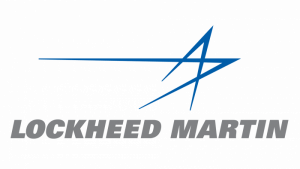Primary Functions
- The Water Risk Valuation Tool (WRVT) was developed to address the often missing link between corporate environmental risk and financial value
Detailed Description
Water is a critical natural capital1 factor that underpins many industrial processes. Water scarcity is therefore emerging as a potentially material risk for business, particularly for companies that operate in water stressed regions and water intensive industries such as mining.
The most recent Ernst & Young ranking (in 2014) of the top 10 business risks facing the mining and metals industry included – for the first time – “access to water,” explaining that the availability of affordable water is “an essential part of operations…and has become increasingly difficult.” With competition for water expected to increase and the long lifespan of a typical mine, there is a strong case for systematically factoring water risks into the market valuation of mining companies.
Along with growing recognition of the potential material impacts of water scarcity, the increasing availability of geospatial data makes it feasible to model out possible effects of water risk on revenues and/or costs. The Water Risk Valuation Tool (WRVT) was developed to address the often missing link between corporate environmental risk and financial value. The WRVT is the product of a collaboration between Bloomberg LP and the Natural Capital Declaration (a finance-led initiative managed by the UNEP Finance Initiative and Global Canopy Programme), with support from Bloomberg Philanthropies and the GIZ (Deutsche Gesellschaft für Internationale Zusammenarbeit). The WRVT is a practical, high-level demonstration tool that illustrates how water risk can be incorporated into company valuation in the mining sector using familiar financial modelling techniques. The methodology can also be adapted to other relevant sectors and refined to eventually support the creation of plug-and-play tools for market participants.
Development of the WRVT began as an adaptation and expansion of the Carbon Risk Valuation Tool (CRVT) released in 2013 by Bloomberg. This provided a similar, early view into how the concept of “stranded assets” could be translated into a demonstration tool utilizing a standard discounted cash flow (DCF) model by examining valuation impacts on fossil fuel companies under a range of carbon emissions constraints. The CRVT’s main asset stranding principle is based on the idea that climate change policies that impose caps on greenhouse gas emissions could induce the stranding of some conventional fossil fuel assets. In contrast, the WRVT models potential asset stranding based on conditions of future physical water scarcity, and estimates the effects of this water risk factor on earnings and share price.
Paired with data from the World Resources Institute’s (WRI) Aqueduct database, the WRVT adapts the CRVT’s overall approach by mapping specific mine assets against water scarcity indicators projected through 2030. Water risk is then integrated into the model through two primary pathways:
- on the revenue side by calculating the value of potentially unextractable ore due to water scarcity;
- on the cost side by modeling a so-called “shadow price” of water derived from a Total Economic Value (TEV) framework, which captures a wider variety of factors (i.e., health, ecological) that represent the value of water supplies to other users.
Throughout the model, users are able to utilize overrides to adjust assumptions and pre-set values, thereby enabling a significant amount of customization. For more detailed guidance on use of the tool, please refer to the “Help” tab on the tool itself.





